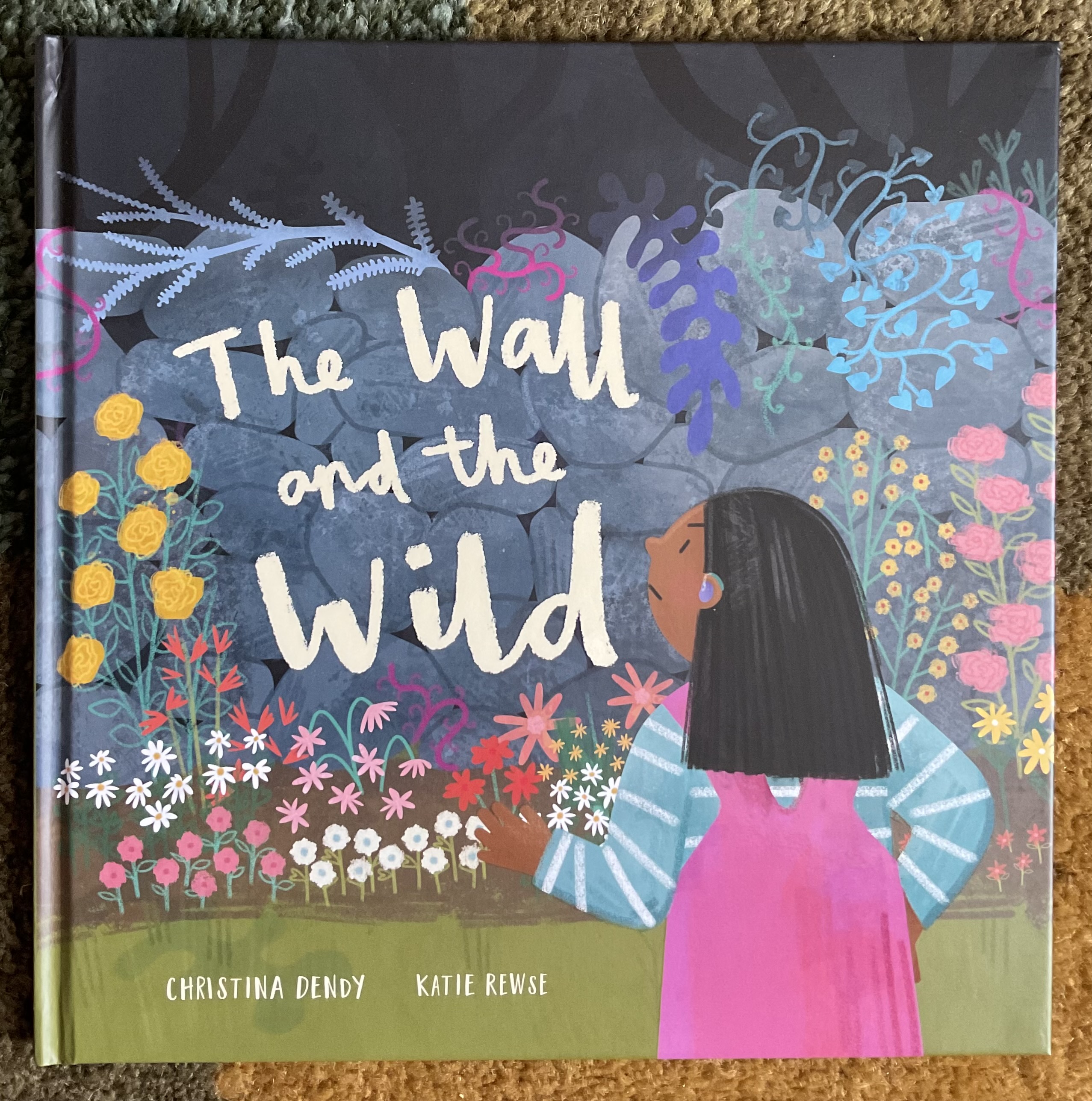Inspiring Young Readers
 posted on 07 Oct 2021
posted on 07 Oct 2021
The Wall and the Wild by Christina Dendy, illustrated by Katie Rewse
Putting a child at the centre of a story with an all important role in influencing the wider community is something I always admire. The cover picture gives us a clue as to how a determined looking Ana is keen to solve the problem of the wilderness that lies beyond her very tidy garden plot at the edge of town. As the story unfolds we can see that she has been responsible for growing this gorgeous garden from scratch:
‘Lovely, tidy, and thick with life’.
As she is obviously something of a perfectionist, Ana only chooses perfect seeming seeds and then throws any others into the untidy patch beyond her garden. Everyone admires the resulting colourful abundance of trees, fruit, vegetables and flowers which the illustrator shows so beautifully. Bees buzz happily with many other insects along the border and she appears to be in blissful control. That is until she spots a curious looking plant that she definitely did not plan for.
By the middle of the book, she is looking very cross as her garden seems to be hard work, but not nearly as satisfactory as before – people seem less interested in visiting. Her garden seems to be getting less abundant as unwanted shoots continue to invade the garden and add to her dissatisfaction. She builds a higher wall between the garden and the wilderness but the plants seem to be undeterred. She seems to have lost the battle as she sits with a furrowed brow staring out at us on the other side of her withering garden:
‘Ana surveys the constellation of uninvited leaves, grass and vines.
They reach over, through, and under the wall while shadows
Creep across the fading flowers of her garden’.
When she hears signs of life on the other side of the wall, her frustrated expression changes at last. She peeps over the wall and is astounded at the vibrancy and beauty on the other side. The illustrator shows us a gorgeous, far less orderly garden bursting with colour and stuffed with all kinds of interesting looking exotic vegetation. Ana realises that the seeds she discarded have thrived in the wilderness:
‘Deep but bright, tangled but rich, strange, but wonderful’.
The wall is removed and everyone in the town can enjoy and tend both the garden and the wilderness together.
There is so much to talk about in this stunning picture book. By the time we get to the end it’s clear that Ana’s garden and her attempts to only let in the ‘perfect’ seeds she herself selects are a metaphor for the bigger story of how we need to encourage and embrace diverse communities if we want our neighbourhoods to surprise and thrill us with their vigour. Building walls to keep out the ‘undesirable’ will always make our own gardens wither because we are excluding those things that make life interesting and unexpected. Just as gardens need all the seeds – perfect or not – communities need their diversity too and excluding people who aren’t like you only hurts us all in the end.
It is, as with all books produced by Lantana Publishing, aesthetically glorious. Beneath the surface it also gives food for thought and to underline this there is an informative afterword which will inspire older children and adults.
Strongly recommended.
Karen Argent
October 2021

